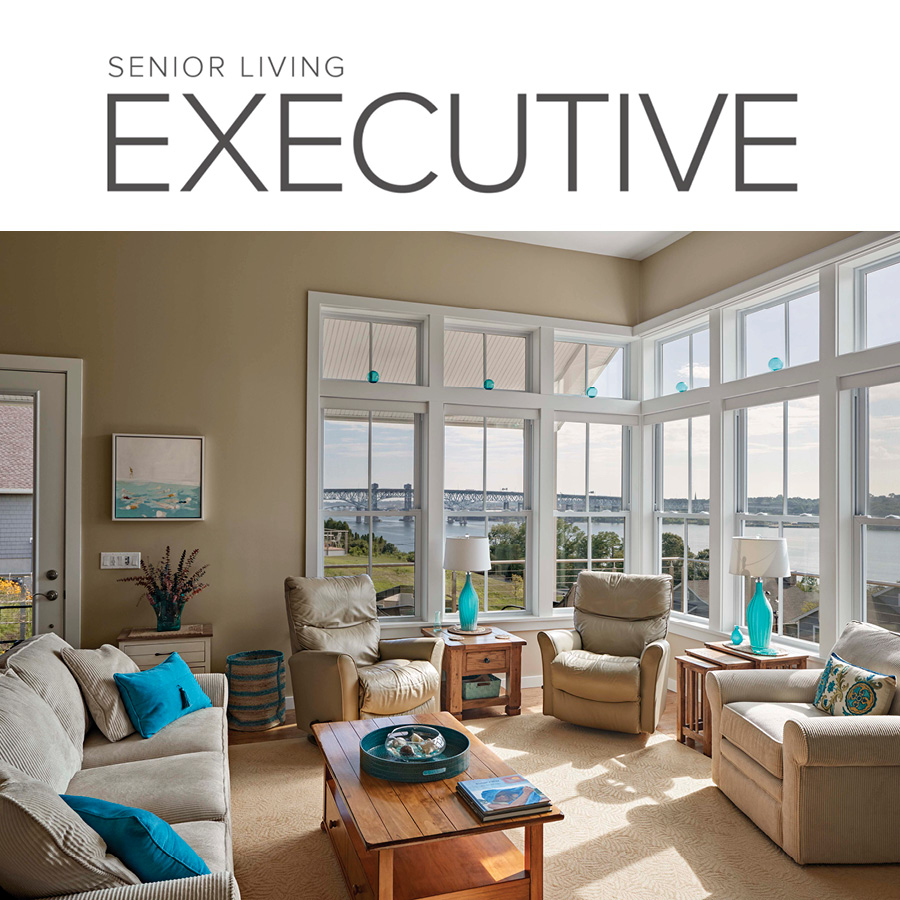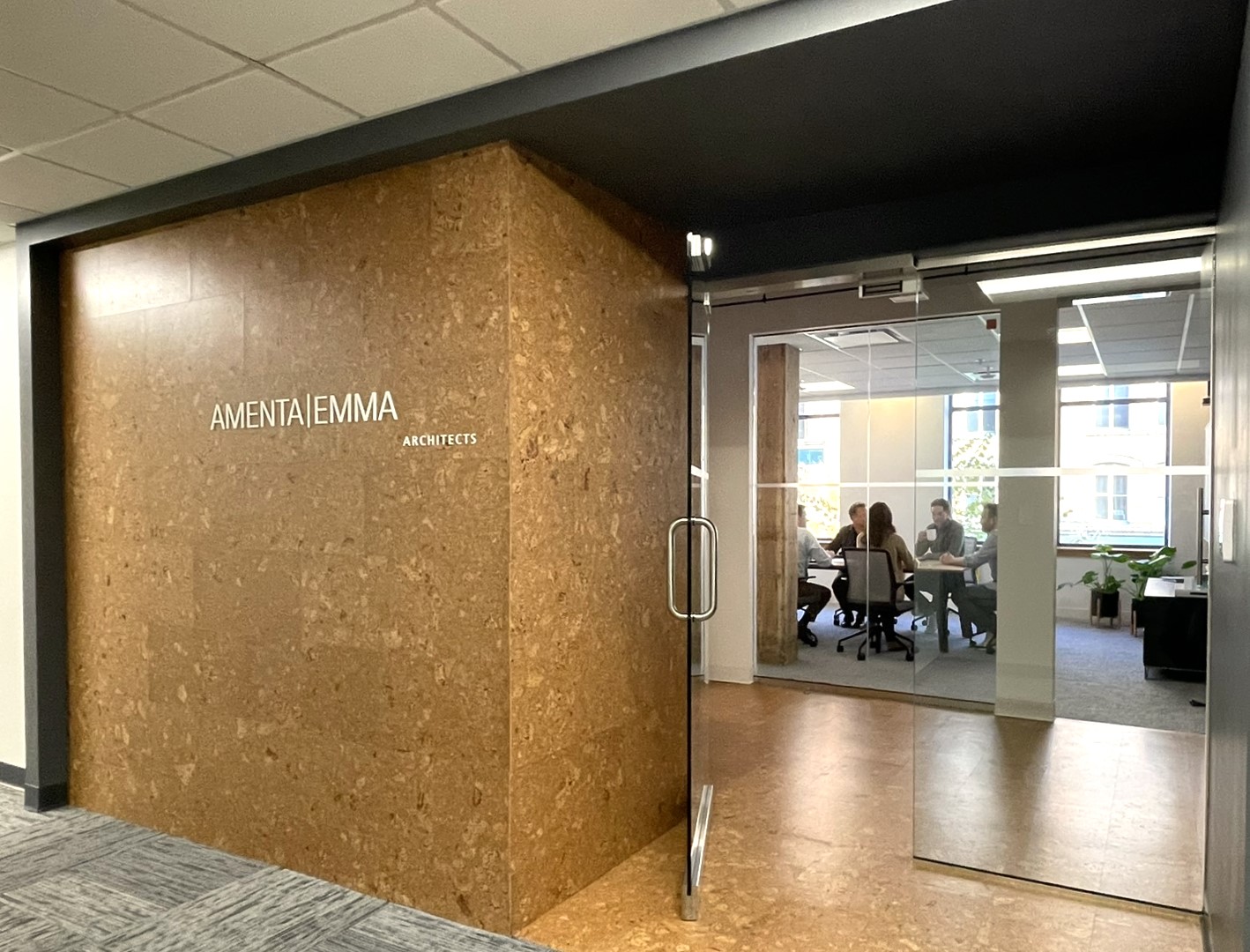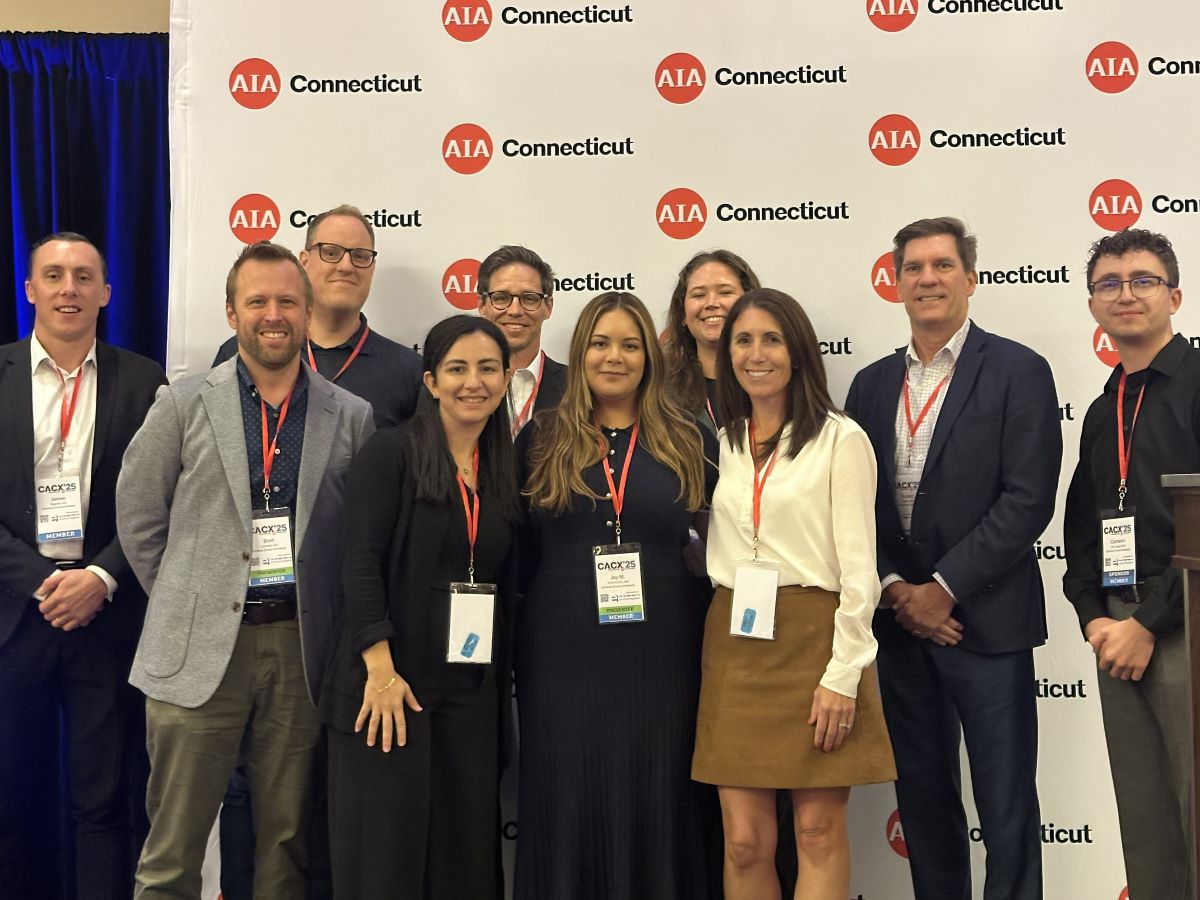The March/April issue of Senior Living Executive is dedicated to safety, and Amenta Emma principal Myles Brown shared insights into how the definition of safety in senior living has shifted during the pandemic. Preventing and detecting falls was once paramount, but updated technologies like touchless interior doors and improved telehealth capabilities are now equally important.
Myles’ comments:
- In senior living design, safety has traditionally meant preventing and detecting falls. Designers had to ensure that people with vision impairments could easily see the edges of the walls and floor and that if a resident fell and was unconscious, they would quickly be assisted by staff.
- COVID-19 greatly broadened the definition of safety in senior living design and put it in contact–or conflict–with other important factors for resident health. Technology such as touchless interior doors, which improve accessibility and space efficiency, suddenly became safety features. Telehealth capabilities, once merely a convenience, are now clearly seen as safety measures for residents and providers alike.
- Long before residents were confined to their rooms or floors for months of quarantine, natural light and a connection to nature have been demonstrated to have a positive effect on resident well-being. I would argue that, under restrictions like those senior living communities experienced in 2020, these features are so essential for the health of residents, their absence essentially becomes a safety issue. The potential harm isn’t as dramatic as falling and breaking a hip, but access to natural light and nature could make the difference in whether some residents are able to endure a crisis like a pandemic or not.
- While total isolation is, of course, harmful to residents’ well-being, spaces that facilitate smaller social circles were fortunately starting to become the norm prior to COVID-19. Before the number of people a resident has contact with became a safety issue, we were already designing senior living communities around the idea of a neighborhood with “pods” that encourage social interactions with 6-12 nearby residents.
- This trend only increased during 2020. I recently had a client, who was planning a renovation of a floor with a central lounge, request the addition of smaller lounges in each wing in order to provide communal spaces if safety requires a reduction in personal contact for residents.
See the page article here.






